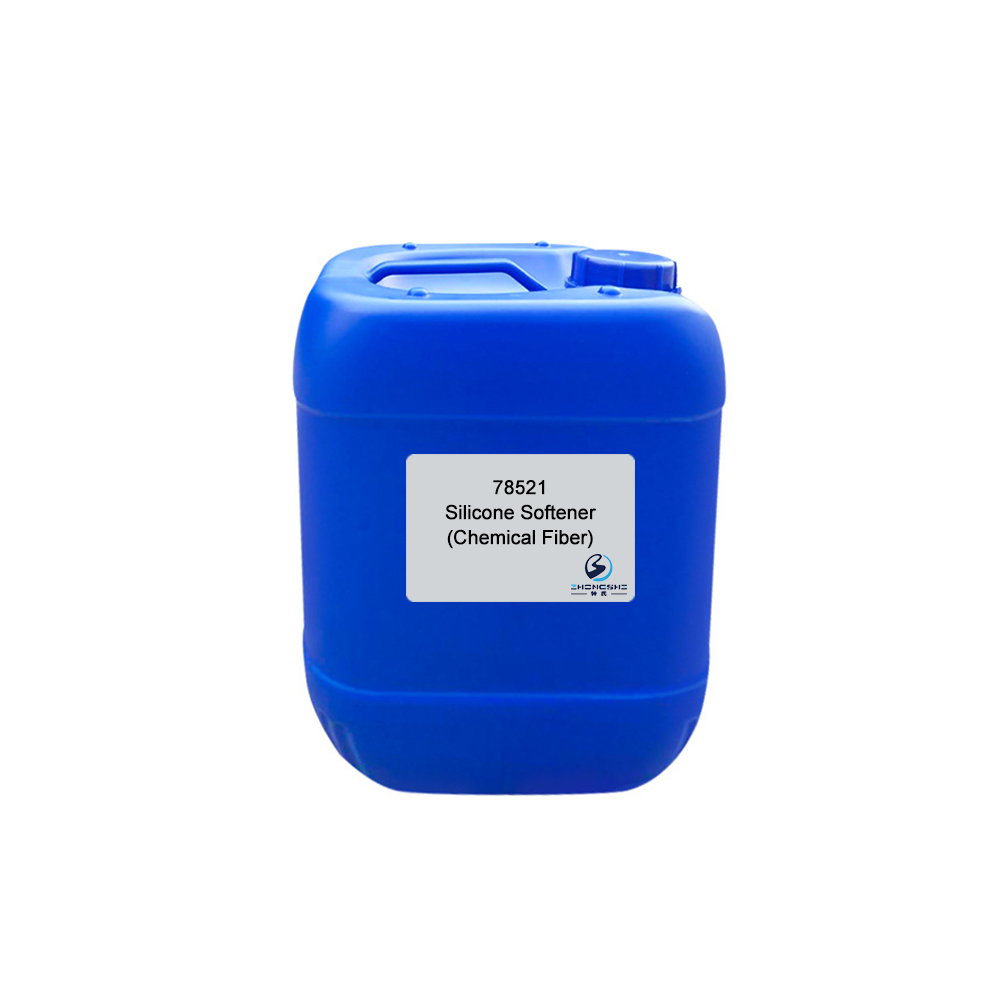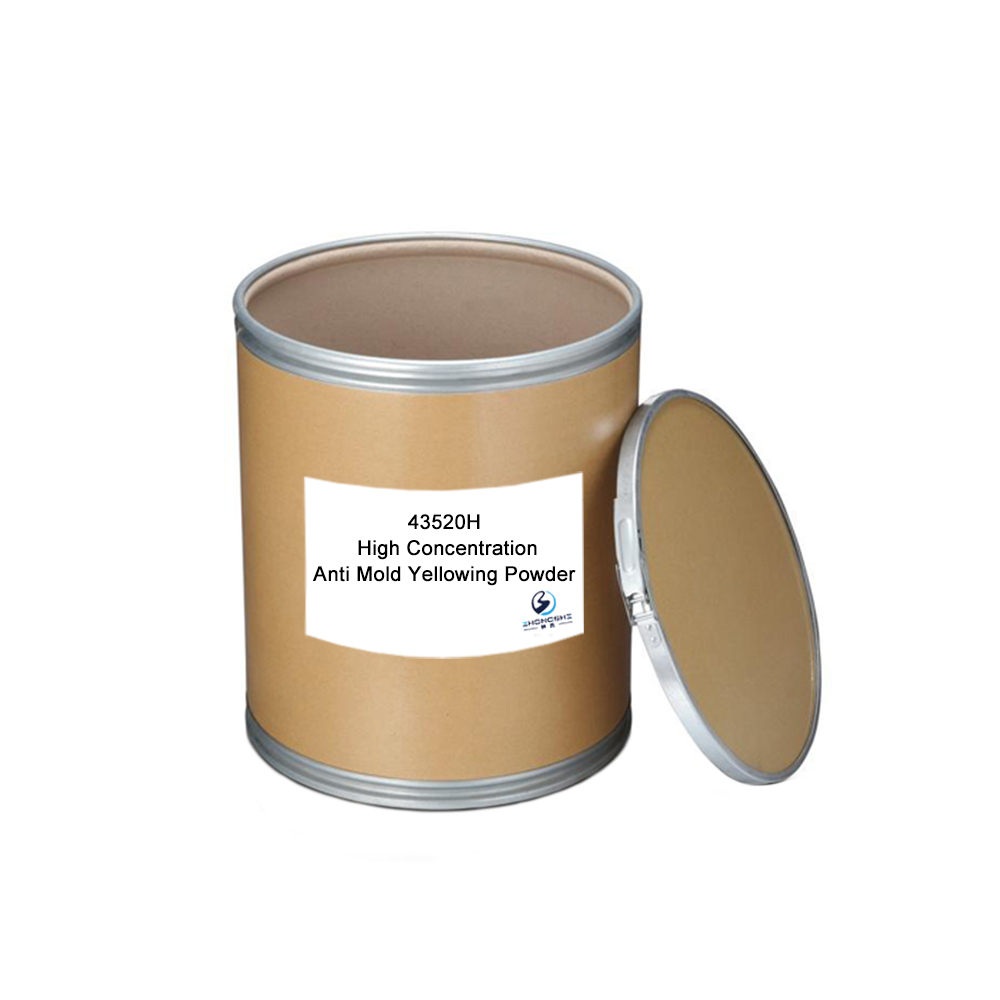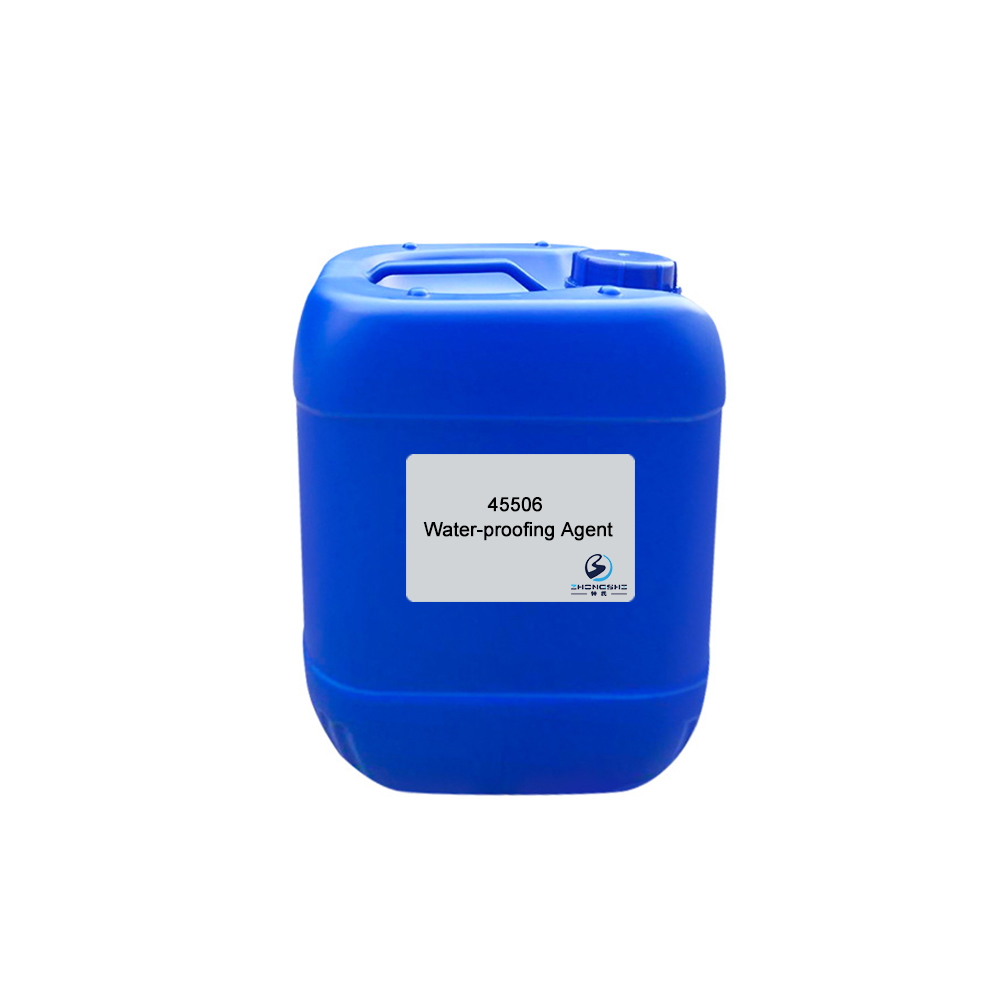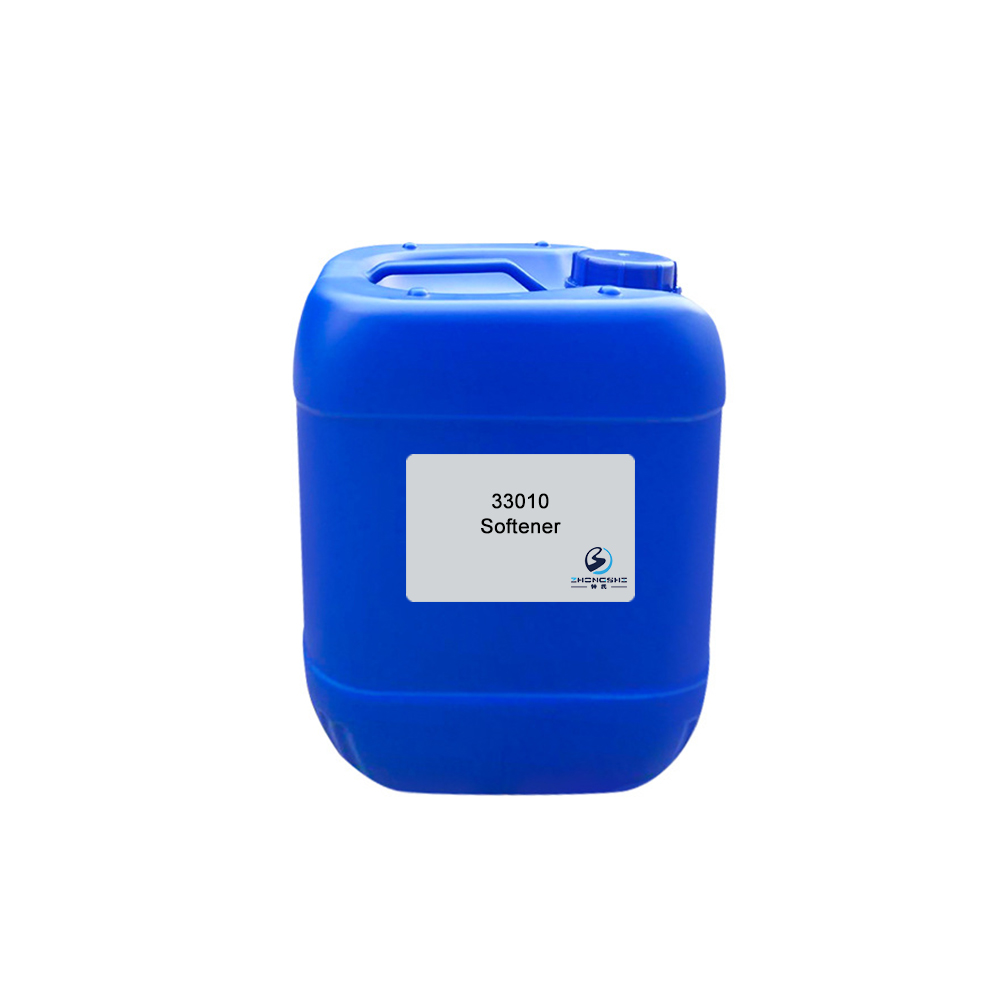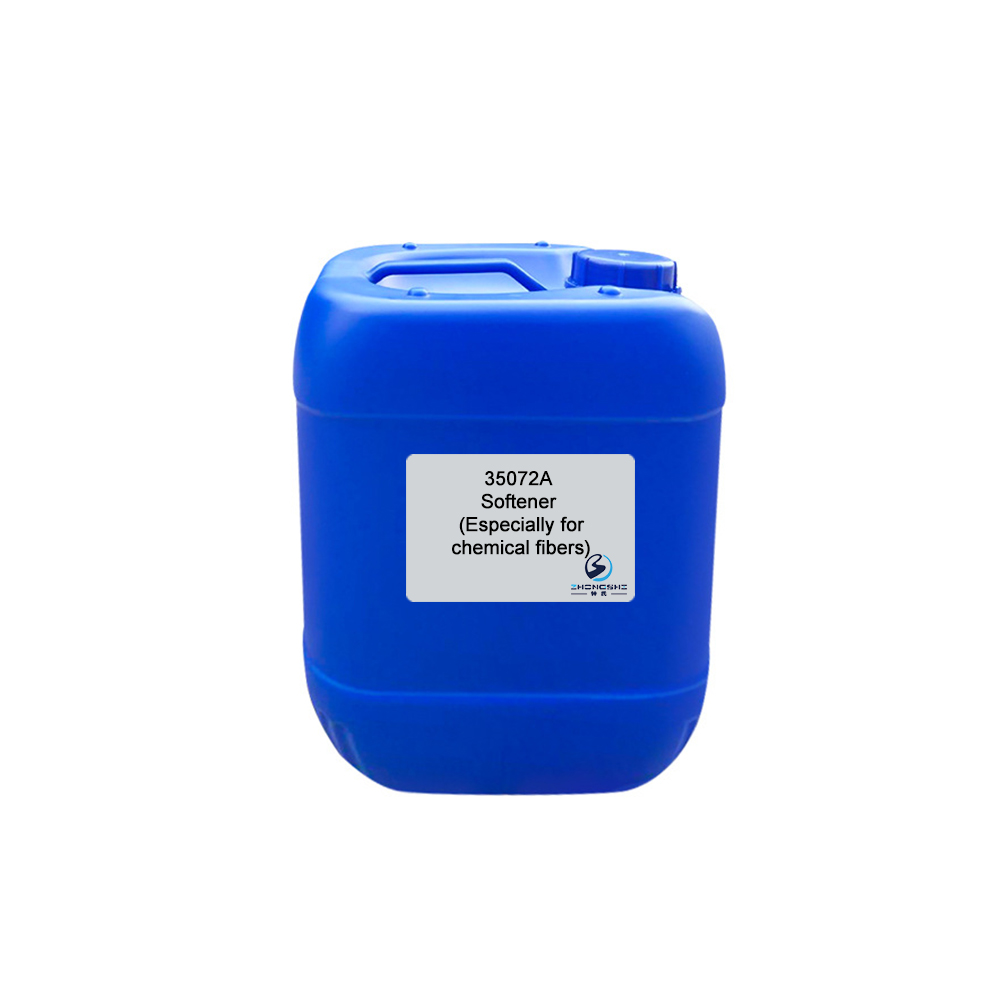Hot-selling Anionic Silicone Oil - 70707 Silicone Softener (Soft & Plump) – Innovative
Hot-selling Anionic Silicone Oil - 70707 Silicone Softener (Soft & Plump) – Innovative Detail:
Features & Benefits
- Stable in high temperature, alkali and electrolyte. High shear resistance.
- Imparts fabrics soft, plump and exquisite hand feeling.
- Low yellowing and low shade changing.
- High flexibility. Suitable for various kinds of equipment. Safe and stable for use.
- Suitable for directly using in dyeing bath.
Typical Properties
| Appearance: | Translucent fluid |
| Ionicity: | Weak cationic |
| pH value: | 5.0~6.0 (1% aqueous solution) |
| Solubility: | Soluble in water |
| Application: | Cellulose fiber and synthetic fiber, especially polyester, nylon and milk fiber, etc. |
Package
120kg plastic barrel, IBC tank & customized package available for selection
TIPS:
Chemical finishing processes
Chemical finishing can be defined as the use of chemicals to achieve a desired fabric property. Chemical finishing, also referred to as ‘wet’ finishing, includes processes that change the chemical composition of the fabrics that they are applied to. In other words, an elemental analysis of a fabric treated with a chemical finish will be different from the same analysis done prior to the finishing.
Typically chemical finishing takes place after coloration (dyeing or printing) but before fabrics are made into garments or other textile articles. However, many chemical finishes can also be successfully applied to yarns or garments.
Chemical finishes can be durable, i.e. undergo repeated launderings or dry cleanings without losing effectiveness, or non-durable, i.e. intended when only temporary properties are needed or when the finished textile typically is not washed or dry cleaned, for example some technical textiles. In nearly all cases, the chemical finish is a solution or emulsion of the active chemical in water. Use of organic solvents to apply chemical finishes is restricted to special applications owing to the expense and the real or possible toxicity and flammability of the solvents employed.
The actual method of finish application depends on the particular chemicals and fabrics involved and the machinery available. Chemicals that have strong affinities for fiber surfaces can be applied in batch processes by exhaustion in dyeing machines, usually after the dyeing process has been completed. Examples of these exhaust applied finishes include softeners, ultraviolet protection agents and some soil-release finishes. Chemicals that do not have an affinity for fibers are applied by a variety of continuous processes that involve either immersing the textile in a solution of the finishing chemical or applying the finishing solution to the fabric by some mechanical means.
After application of the chemical finish, the fabric must be dried and if necessary, the finish must be fixed to the fiber surface, usually by additional heating in a ‘curing’ step. A schematic diagram of a pad–dry–cure process is shown as below.
Product detail pictures:

Related Product Guide:
Guangdong Innovative Fine Chemical Co., Ltd. has consistently adhered to the "technical innovation" routine, with "fast service, stable quality" as the service purpose and “Credit comes from quality, technology assures service” as its philosophy, cooperates with printing and dyeing enterprises in the industry to promote and improve product quality so as to fulfill the pursuit of high-quality and high-value-added products. At present, it has become a designated auxiliary supplier for many well-known clothing brands at home and abroad. Hot-selling Anionic Silicone Oil - 70707 Silicone Softener (Soft & Plump) – Innovative , The product will supply to all over the world, such as: Vancouver, Guatemala, Amsterdam, Silicone Softener 88768 is weak cationic and transparent silicone emulsion. It has high stability. Silicone Softener 88768 is suitable for various kinds of fabrics of cellulose fibers and cellulose fiber blends, as cotton, viscose fiber, cotton/ polyester, cotton/ nylon and modal, etc. It can impart fabrics soft, fluffy and smooth hand feeling. It is handle finishing agent for fabrics, especially for Lycra. It is extremely low yellowing. A very small dosage can achieve excellent effects. For padding process, it needs to add 10~30 g/L only.
Factory equipment is advanced in the industry and the product is fine workmanship, moreover the price is very cheap, value for money!



